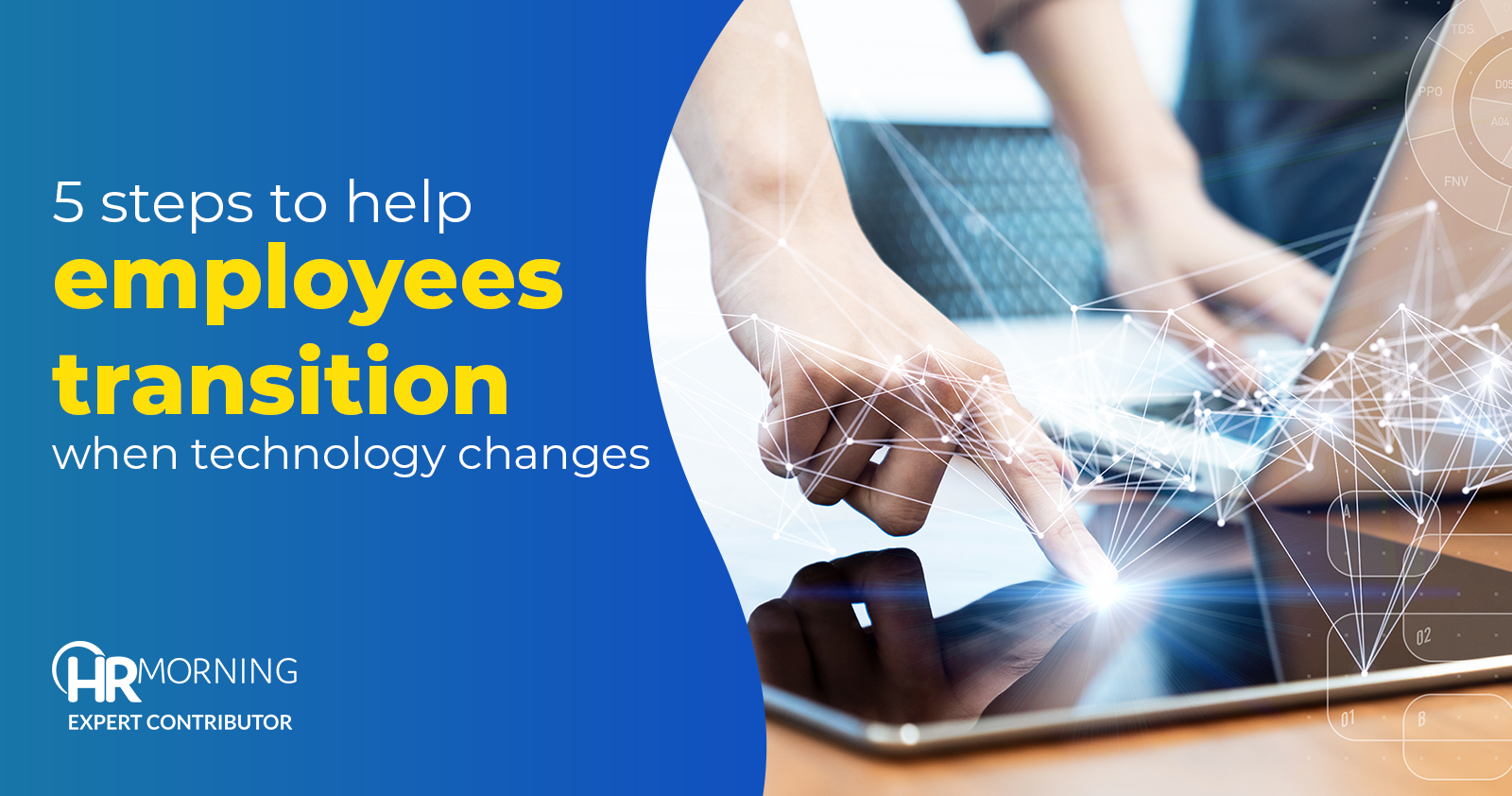New technology changes can have a positive impact not just on how people work, but on your office culture as well.
But sometimes technology changes can intimidate and alienate employees who are comfortable working in traditional systems and procedures, and have trouble adjusting.
It’s normal for workers to at first be apprehensive to big changes when they’ve grown used to the way things have been done for years.
That’s why it’s important to see things from their point of view and understand that change is tough, especially when it upheaves years of doing things with traditional processes.
1. Help them see the value
When introducing new tech solutions to your colleagues, it’s important to help them understand why you’re implementing it and what it will do for the business.
Explain not just how it will benefit the business in general, but how it will benefit their specific roles and what the impact will be.
If it’s a tool that’s meant to streamline a certain process, be sure to impress on them that the time saved will allow them to focus on more and grow their roles.
If it’s a solution that’s meant to free up more resources, discuss with them how they now direct that saved budget and labor to more productive things. If they can see the value it will bring to them as an individual, you can make them excited to learn more about it and look forward to its implementation.
Document management solutions represent a big shift in how businesses interact with their documents, especially if you’re transitioning from a mostly paper-driven structure. However, it’s a technology that vastly improves business processes by introducing tools like automation and intelligent organization.
2. Keep them informed
Most big technology changes requires time for implementation and onboarding. It rarely happens overnight, so having a road map for implementation is essential to make sure it all goes smoothly.
More importantly, staying transparent with your employees on this roadmap is helpful in easing them into the new system. Letting them know what they can expect during the implementation period can give them ease and let them know that they have time to get used to the transition rather than just diving in.
3. Give them time
New technology always has a learning curve, and this is especially true for those who aren’t used to working with it as part of their job.
While some are quick learners and early adopters, there is an equal number of those who have more of a struggle learning how things work. They won’t get it overnight, so it’s important to be patient and encouraging.
A transitional period where they’re still allowed to get their job done the old way while learning the new way is encouraged if possible. As long as they’re willing to learn and not resistant, it’s worth it to let them grow at their own pace, all while providing the necessary support such as additional training and mentoring.
4. Incentivize
If some employees are more resistant than others to adopt technology changes, it doesn’t hurt to throw out some incentives to encourage them to embrace the change.
Offering perks such as free lunch with training will make those employees a little more enthusiastic about attending those meetings.
Get creative with tying small rewards to the use of the new tech solution as well as implying bigger forms of recognition for demonstrating proficiency and enthusiasm for the new system.
Let them know that the skills learned from training will reflect across their entire career and showcase their adaptability.
5. Listen
Taking in feedback is an important part of any business decision. Not listening to your employees’ opinions and concerns about adopting a new tech solution is a sure recipe for disaster.
Encouraging an environment where your colleagues can discuss freely their experience with the current processes and how introducing a new factor that will impact those processes will help inform how you build out your implementation roadmap and how you go about training.
Being open to their ideas of how to transition and addressing their concerns will make them feel part of the process and not feel like it’s being forced upon them.


